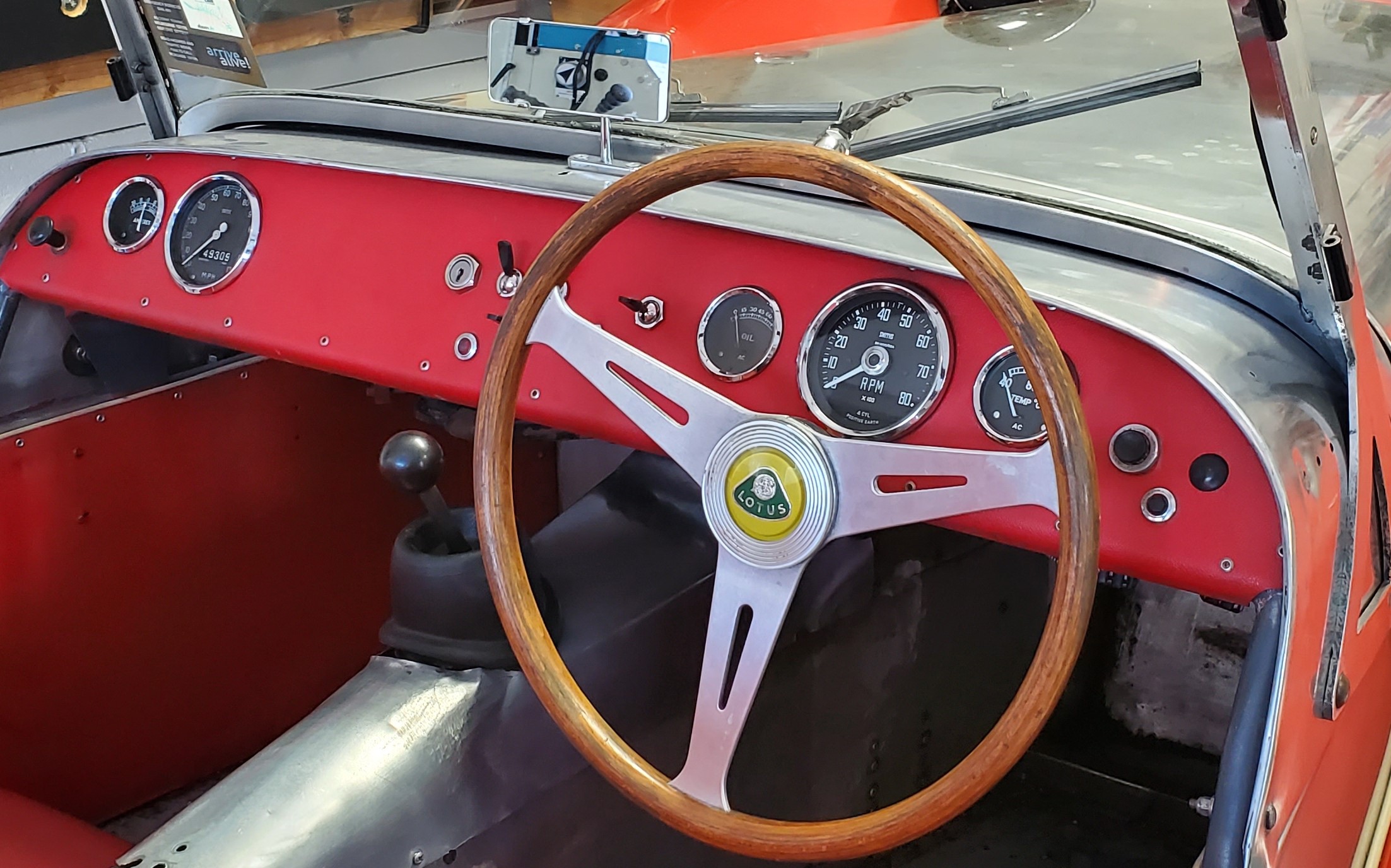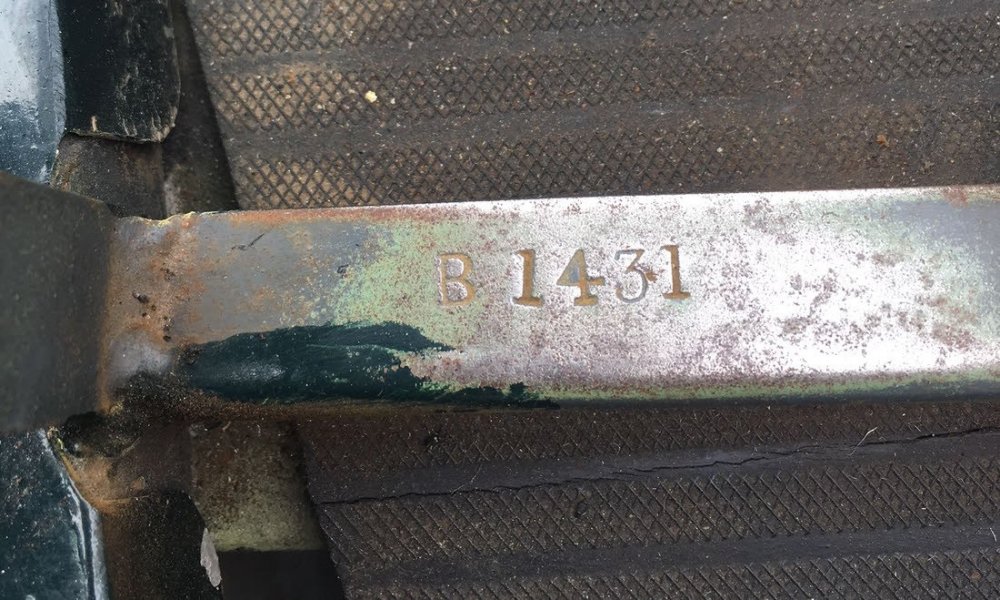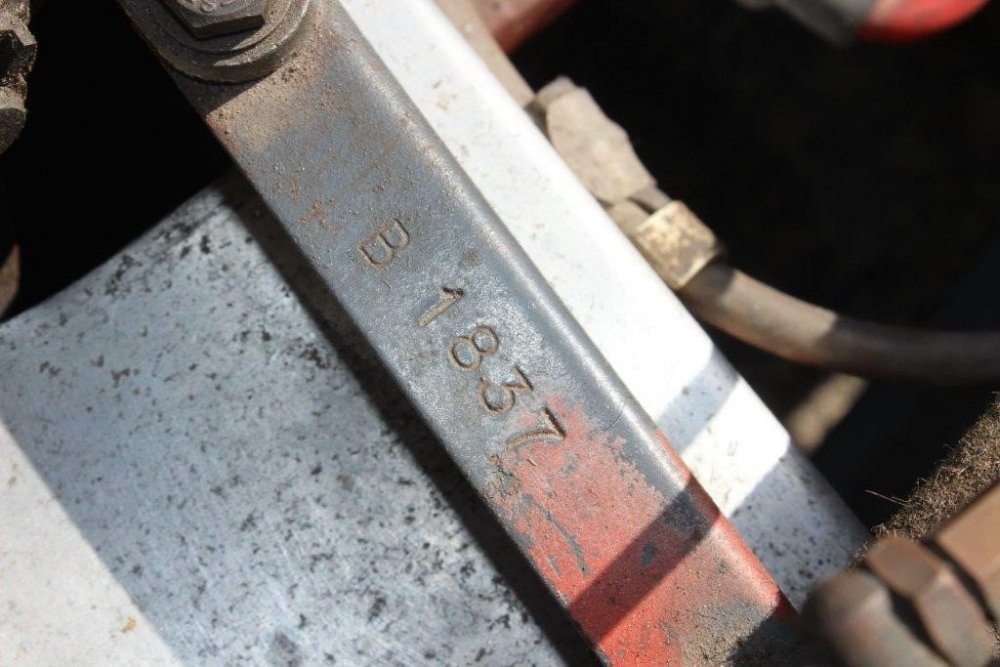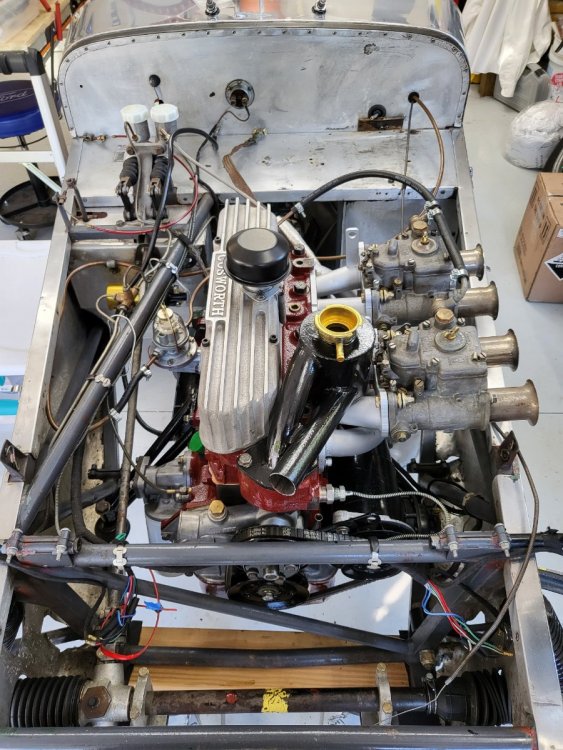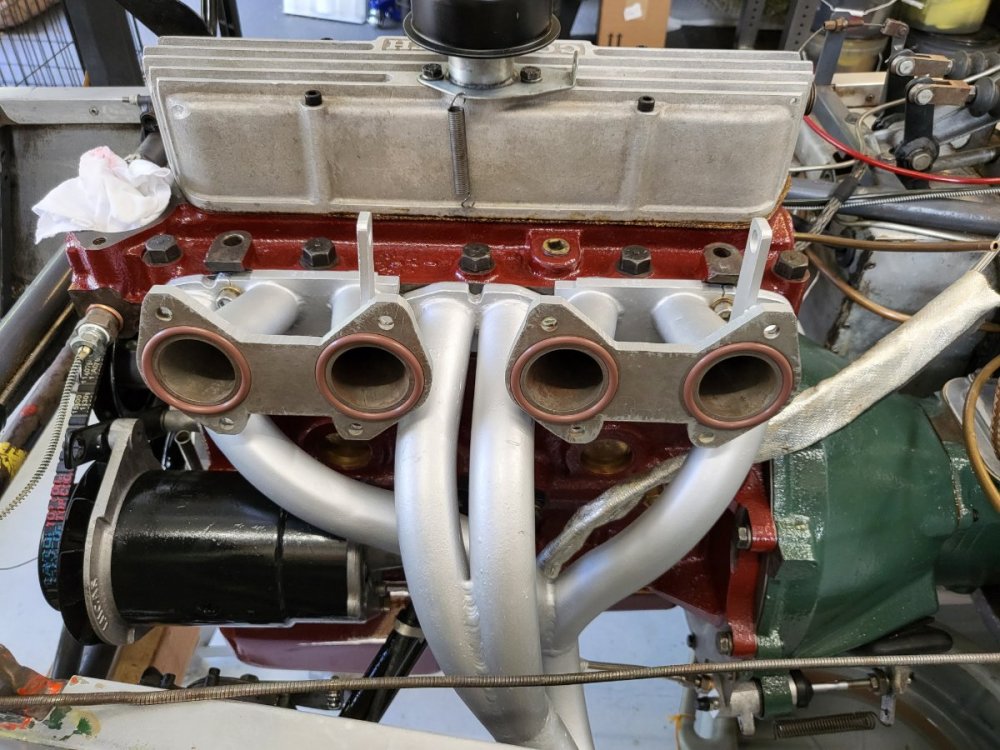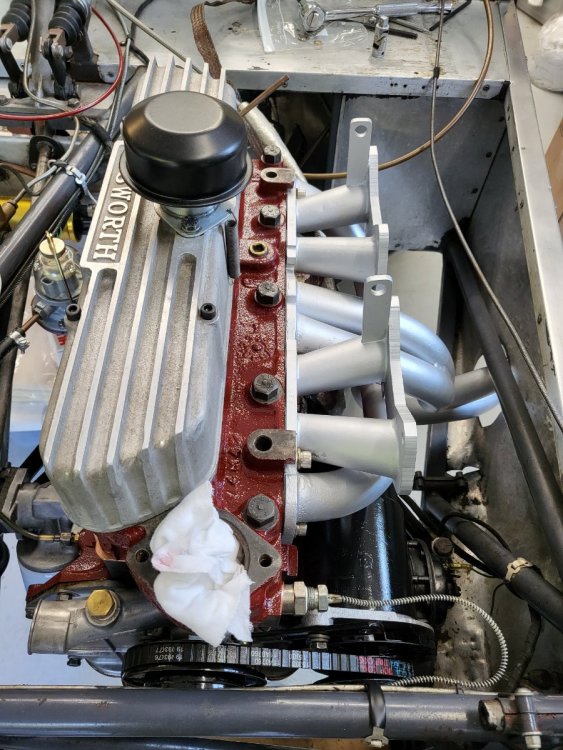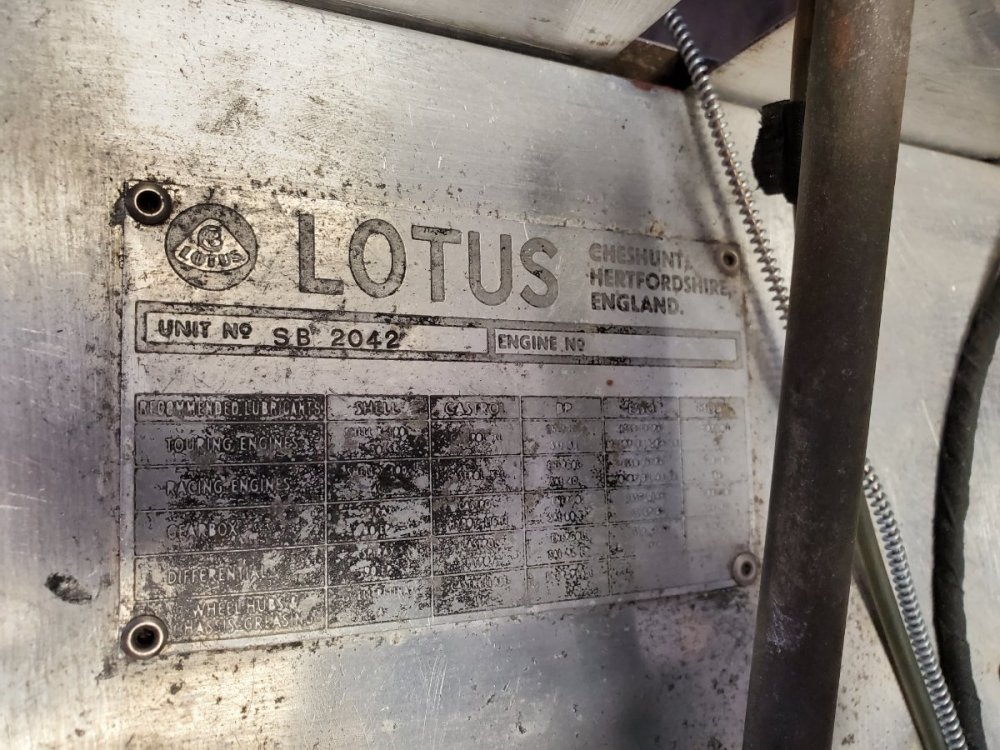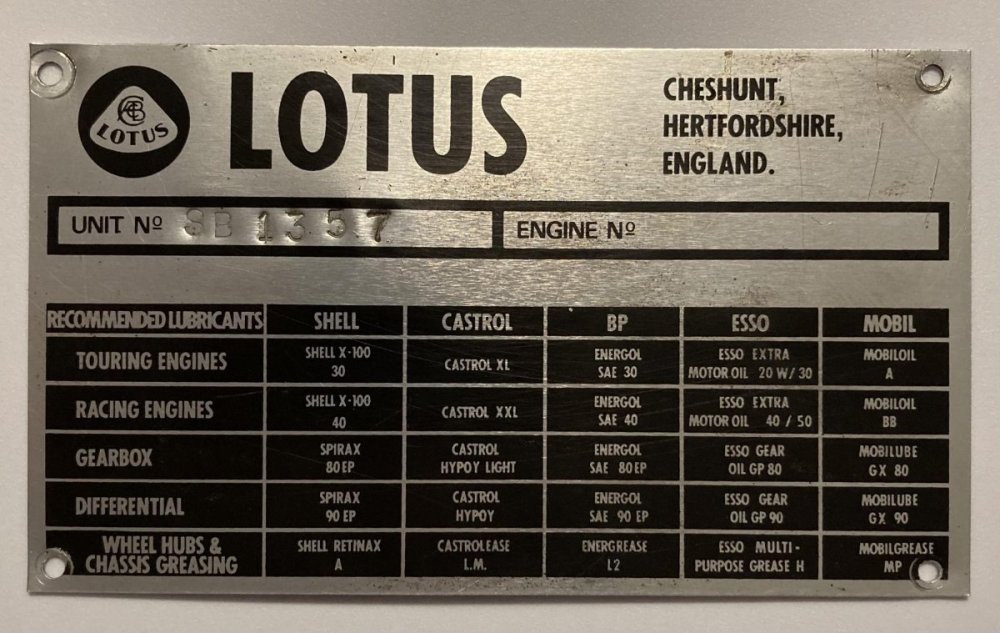-
Posts
633 -
Joined
Content Type
Profiles
Forums
Store
Articles
Gallery
Events
Library
Everything posted by SENC
-
Mine is like Tim's - essentially rubber "top hat" shaped washers that fit within the brackets on the chassis, and that accept (non-threaded) posts that protrude from the bottom of the radiator. I have it back together now, but will search for a picture.
-
Welcome Jim!
-
Stay tuned... I had a long and boring Zoom today and tool yhe opportunity to scan while listening in, so should have it available sooner than later.
-
That is a good find, @TheDingo8MyBaby, thanks! As many times as I've been to and through the simplesevens site, I never found that page. Some good information. So, that would place the Arch Motors start with the chassis later - my 65 also has a B. I understand your point about preserving some identifying information - on the flip side, in this day and age, I've wondered if full transparency for all to see doesn't provide as much protection (why risk a counterfeit of something that is publicly documented?). That wondering notwithstanding, I have a tendency to post/publish slightly altered pictures (cropped, zoomed, etc.) so that if one ever got used for something counterfeit I'd have the original basis. Silly and sad we have to go through this. Again, nice find.
-
Great looking car, and seeing in the write-up that Mick at xtraspecialsevens did the restoration work I think you can be assured it was quality work. I'll try to expedite getting a copy of the manual - or at least the short S3-specific section - photo-scanned. I know how eager I was to have similar information at hand when I acquired my S2. If you don't already have them, Tony Weale's Lotus Seven is a must-have, and Ortenburger's Legend of the Lotus Seven highly useful. @Christopher smith - I know there was a manual as early as Cheshunt (so published 1965 or earlier), as I've seen it - and would love to find one just to have with my Cheshunt car. I think the issue was they couldn't publish build instructions - but the owner's manual does have an entire section called "overhaul and rebuild".
-
Very exciting! Please post up some pictures and tell us about your car! Caterham produced a manual that included S2 through S4. This is the pinkish looking manual you'll see pop up on Ebay periodically. I have a copy, and am happy to grab a photo if you're looking for anything in particular. Also keep your eyes open for a Lotus Elan manual - they are more common and typically not too expensive, and some of the information is really useful for the Seven (gearbox, clutch, engine block - and if yours is a twin cam then the whole engine). @Croc - it is bound so can't run it through a scanner, but one rainy evening when I'm stuck inside or watching a ballgame, I'll do the cell phone camera scanner thing. I agree, it would be worth having it available as a reference for all.
-
Started up and ran well! I do have an issue, though, a whirring when the clutch pedal is fully depressed. Halfway and I'm getting engagement, no whirring, but depress further and it whirrs. New clutch, pressure plate, release bearing (good quality NOS) and spigot bearing. I suspect it is the release/throwout bearing, which would be engine back out to replace - but since it it NOS I'm may run it a bit to see if I get lucky and it is just old grease that has hardened and that softens up over time. Made a poor decision to try to back off the clutch rod nut to see if that would assist. I should have known the result, but wasn't thinking clearly. As you might guess, a little extra clearance was just enough to allow the piston in the slave to get to the tapered exit and to jam . Fortunately I was only a mile from home so my son picked me up and I gathered a spare and some tools and a bleed bottle and did something I could not have done on my Elan (without ramps or blocks) - a roadside slave cylinder swap. That got me home. I'll recheck all that this week, and maybe get to a break-in drive next weekend. Not how I wanted to spend the afternoon, but happy with a running engine that seems healthy - and I'm going to be cautiously optimistic I won't have to pull it back out for another throwout bearing swap.
-
She's back on her feet and full of fluids. Turned over without plugs to get fuel in the carbs and saw the oil pressure gauge start to move, so the battery is charging overnight and will see if she starts tomorrow. Well wishes and final words of warning or advice are welcomed!
-
@croc - to my knowledge Progress and then Arch stamped their frames from the start. There may have been a company in between, too. I don't know exactly when Arch started making the frames for the Seven, but at some point in the S2 range. A total guess, but the transition may be marked by the change in stamping location (frame at base of passenger seat to frame at master cylinders). The #B1431 frame above is from a 1962 - so likely earlier than 62? I'll check some of the resource books I have over the weekend.
-
Excellent addition to the garage! Welcome!
-
Several sources indicate the frame number is located in 1 of 2 places in S1-S3 Lotus. S1s and some S2s will have a metal plate with the number stamped on it welded to the frame just in front of the passenger seat. If someone has a picture of one they can add, that would be helpful. At some point (anyone know when?), the practice changed and the rest of the S2s and then S3s had the number stamped directly in the frame beside the brake/clutch master cylinder mount. I've added a couple pictures of these later stampings, and a drawing with the locations circled. Note this is a different number than the chassis number or VIN, and was frequently (always?) recorded with the chassis number in Lotus records, so together they are very helpful for confirming identification.
-

Lotus Seven Series 1C Replicas, Replacements and Real?
SENC replied to lotusman1951's topic in General Sevens Discussion
I remember thinking that was a pretty good price last year, and certainly the entire market has been moving up the last 6-9 months. Worth checking on it with John Watson at the lotus 7 registry to see if he knows any history or has any advice. -
Big ask! The Elan seems closer to reality pricewise.
-
The internet has made the world a LOT smaller, hasn't it!
-
I think this is right on - the plate itself is only 1 of several important factors in determining "authenticity", and the frame is the next good place to discuss. I started with the plate mainly because it is the most obvious and most discussed, and also easiest to replicate - so my goal there was to see if we could establish any obvious parameters that might help someone establish that a plate may be real or replacement (or fake). I'll post up some frame pictures and observations later, but want to reiterate what someone has already said in one thread or another here - that we are fortunate that there is a Lotus 7 Registry and a real expert there in John Watson who can help owners evaluate what they have (or are considering buying). He and the (limited) factory logs are the best source - but it would be nice to gather as much general intel and knowledge as we can.
-
Some have said the original plates on S2s are the ones from Lotus Components, like this example from a 62 S2 that I found on an auction site. Has anyone seen or found anything definitive in this regard? I know Elites and Elans of the same era had plates similar to mine above, and some had plates like this - so my suspicion is that they were likely both used on Sevens, as well. Some have also said the originals were all inscribed, not stamped. I've read somewhere (but can't find it now) that early on (for Elites and Elans, at least), the plates were attached to the body at the start and so couldn't be stamped without damaging the fiberglass, but that the practice later changed to stamping them before afixing to the body. Makes sense - but does anyone know if true?
-

Lotus Seven Series 1C Replicas, Replacements and Real?
SENC replied to lotusman1951's topic in General Sevens Discussion
Good luck in your search, Kevin - they are special cars, indeed! -
Indeed! Really enjoying riding along, Ron!
-
As I recall, it started with the S1s with the Coventry Climax engines. With the S2, Super Seven was used for the Cosworth-modified 1500 engines (both the 109E and 116E, I think). All S3s were "Super Sevens". S4s were not, until Caterham took over - and I think they used Super Seven since they couldn't use the Lotus logo.
-
The 1962 Seven Project on BAT (https://bringatrailer.com/listing/1962-lotus-seven-4/) has raised a discussion about "official" vs repro or even counterfeit ID plates. To help those who might consider buying an early Lotus Seven one day, I thought it might be useful to gather information on the topic here. As absolute facts can often be hard to establish with Lotus, I'd like this to be a thread to share not just what is "known" but also what is speculated, rumor, and even wives tale. Perhaps enough information can be gathered in 1 place to at least assist in discernment. It doesn't need to be said here of all places, I know, but neither a plate nor numbers, nor age, nor manufacturer have any impact on the potential fun of the Seven - this isn't a thread about value in any sense. It is only intended for discussion and discourse about identification of early Sevens as it relates to their numbers and chassis plates. To get started, I'll share a picture of my chassis plate. The first picture is circa 2008, I don't know that I have an earlier picture. The second is after a little light cleanup (light because any more effort and only the stamping will be left!) - added only because resolution is likely better than the earlier photo found on the wayback machine. I have great history on this car back to its original owner, so suspect this to be the original plate, but not sure there is really a way to tell for certain. The Lotus Seven Registry website suggests the numbers could be stamped, scratched, or etched - but I've heard otherwise, too. And, for reference in case the BAT auction pics are one day unavailable, the picture of the plate for the vehicle listed.
-

The Regular Summary of Classified Ads of Se7ens Found For Sale
SENC replied to Croc's topic in Cars For Sale
I would not be surprised if this is the original chassis, but it has definitely been modified and strengthened. Without the plate and history, which the seller admits to not having, it could never be validated as an original Lotus. There are plenty of other indicators it is a collection of parts (dash and gauges are incorrect - the presence of the 2:1 manifold and carb make me suspect the dual webers and manifolds are aftermarket - and I think the correct bellhousing would have been the unribbed variety), but it could make a heckuva fun "bitsa" Seven. Lots of work to be done, though, and could alternatively be a nice parts buy - much of what is included are getting very hard to find. The original tank, radiator, front suspension, and rear axle have some value, as do the block and gearbox. -
... and from the lotus7register site: S1 WEIGHTS: Pre-October 1959: Original 100E Ford model without spare wheel - 725lbs and Export 100E Ford model with spare wheel - 822lbs. October 1959: Ford 100E model - 918lbs and BMC "A" Series model - 896lbs. S2 WEIGHTS: Weight given in Owner's Manual 924lbs. However road test reports give: "A" Series car 960lbs. - 105E car 957lbs. - 109E car from 952/1015lbs. - 116E car from 1008/1064lbs. S3 WEIGHTS: None given in Owner's Manual. However road tests give the following:- Autosport 1969 - Lotus Seven "S" - 1204lbs. Autocar 29/1/70 - Lotus 7 Twin-Cam SS - 1254lbs. Road & Track Oct 1970 - Lotus 7 Twin-Cam SS - 1210lbs S4 WEIGHT: Laden 1310lbs. (Twin-Cam Version).
-
Lotus Seven Register - Home Page (lotus7register.co.uk) - a series of articles on the history under Lotus, by John Watson.

